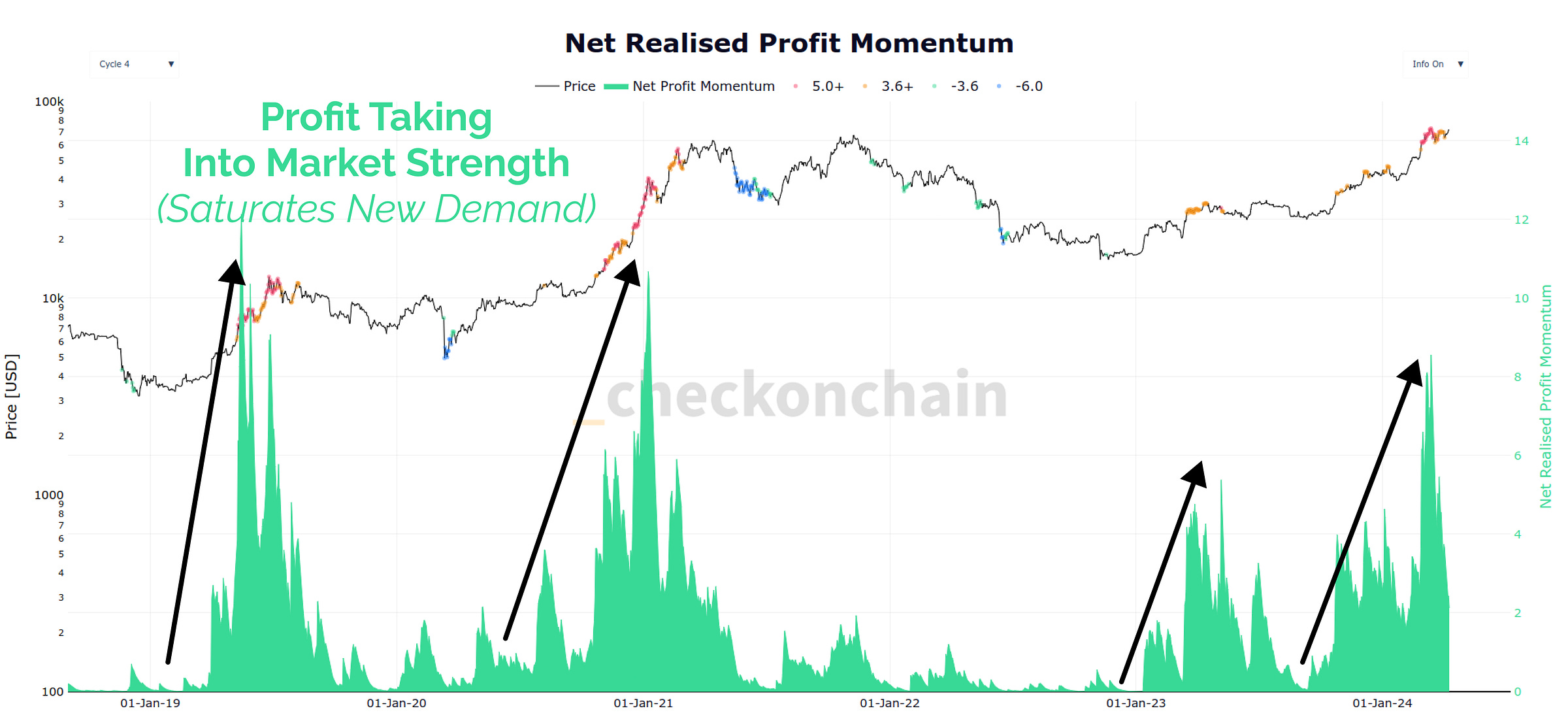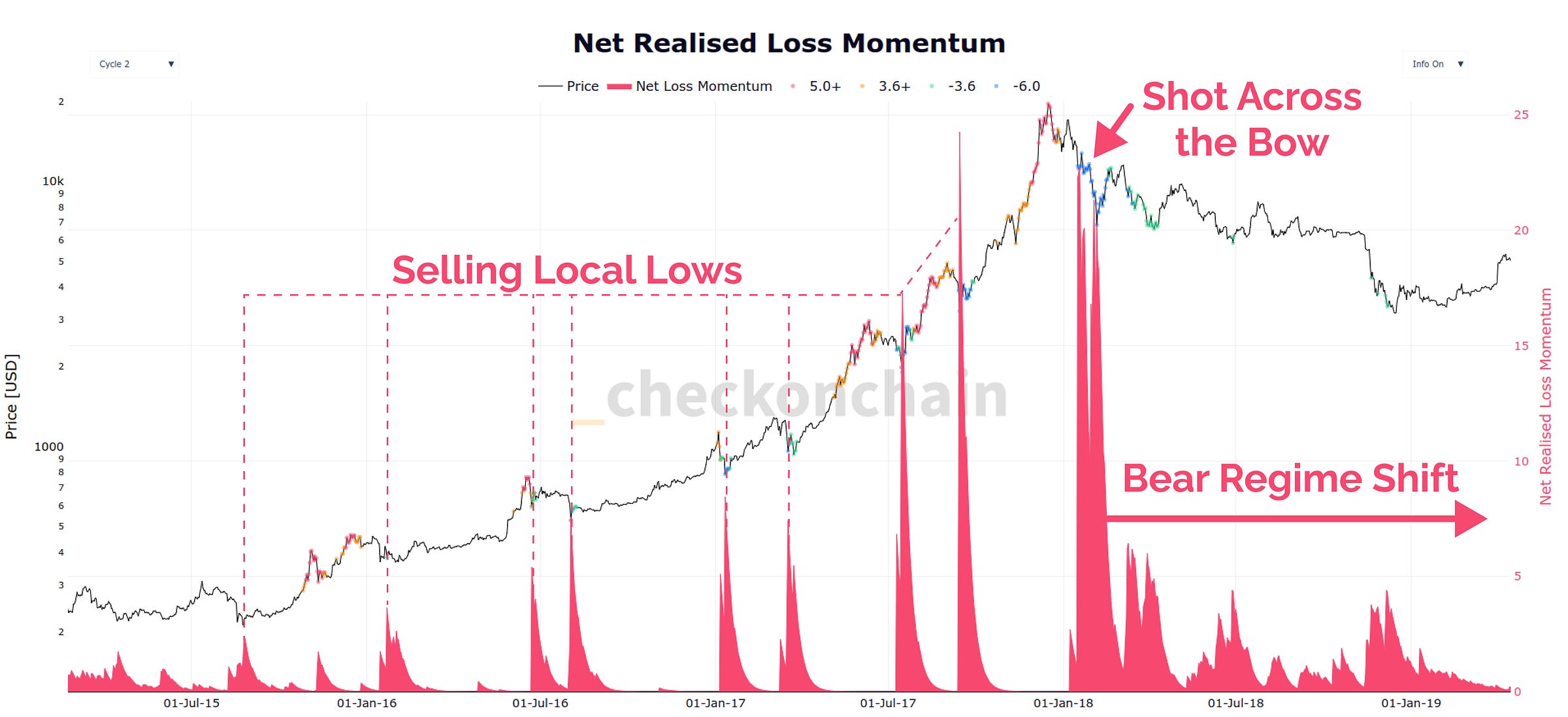Masterclass #1: Why Onchain Analysis?
Bitcoin onchain data provides analysts a degree of X-ray vision into market behaviour, offering powerful tools and insights into investor behaviour that traditional finance can only dream of.
“Put all your eggs in one basket, and then watch that basket.” —Andrew Carnegie
Bitcoin is unique, and is undoubtedly one of the most loved, hated, feared and revered assets in human history. It’s meteoric bulls, depressing bears, and one of a kind value proposition, has attracted holders and speculators from around the globe; bringing all manner of backgrounds and life experiences with them.
Most importantly, it is a an opt-in system, meaning almost every decision and action by Bitcoin holders which occurs onchain, is a voluntary one.
At the centre of what ultimately makes Bitcoin special, is the organic nature of its ledger, immutably recording who owned what, for how long, and when (the UTXO set). Given the wild volatility of Bitcoin’s price, its ledger offers us a truly unique lens into the full range of human incentives, emotions, decisions, and psychology in relation to markets, fear and greed.
Over the last six years, a fascinating new discipline of analysis has developed for Bitcoin, which focuses on extracting key market information from within the Bitcoin ledger itself. This article will explore some of the most powerful concepts in the field of onchain analysis, and demonstrate just a few of the insights which help investors and traders navigate Bitcoin’s volatile markets with confidence.
The chart below is an example of an onchain tool which helps us identify when different sub-sections of the Bitcoin market are buying low (blue), and selling high (red). The rest of this article will explore the puzzle pieces that make tools like this possible.
At Checkonchain, we believe that onchain analysis is an invaluable toolkit for investors, helping them make better, and more informed decisions, to navigate Bitcoin’s volatility with confidence.
What is Onchain Analysis?
Onchain analysis is an analysis discipline based in the study of the database contained within the Bitcoin blockchain. Analysts can parse this data and extract useful information describing a wide variety of market dynamics, investor behaviour patterns, and capital flows. There are two very distinct fields of blockchain analysis which leverage onchain data:
Forensic analysis, often associated with the tracking individuals for the purposes of law enforcement or surveillance. This is strictly NOT what we are referring to when we use the terms onchain analysis.
Onchain analysis, being the study of aggregate transactions, volumes, and supply dynamics, alongside heuristics to help categorise them, for the purpose of studying Bitcoin markets, trends and asset performance.
By studying and categorising Bitcoin supply and transfer volumes over time, we can develop robust models for investor sentiment, and the flow of capital into, out of, and around the Bitcoin network.
Let’s relate some of these ideas to traditional finance; pick your favourite stock, and imagine you had the ability to model and see:
The average cost basis of all holders who bought within the last year.
When large holders, with a high conviction, start taking profits in size.
Periods when a majority of sold shares are capitulating heavy losses.
If we keep to this analogy of the stock market; Onchain analysis can be thought of as the study of Bitcoin’s quarterly reports, except the reports come out at ~10-min intervals, whenever a new block is found.
At Checkonchain, we often relate onchain analysis to having a degree of X-ray vision for the Bitcoin market, allowing us to see the aggregate holding and spending behaviour of all Bitcoin holders.
Show Me the Alpha
There are two types of investors and traders in markets:
The experienced smart-money who understand the asset, the market, and are the ones who are able to consistently buy low and sell high. They are the 5% to 10% who succeed in generating alpha and edge.
The inexperienced prey who are driven by our hardwired emotional conditioning to avoid risk at all costs. The result of this is most people make the exact wrong decision and the exact wrong time, and consistently buy high and sell low.
Onchain analysis allows us to visualise and assess the behaviour of both sides of this equation. In many ways, it helps us become better contrarians, filtering out all the narratives and noise, and using data to make better decisions.
This chart shows the volume of the Bitcoin supply held for at least 6-months. Note that it steadily rises during bear markets, as coins are patiently accumulated and held by high conviction holders through 75% drawdowns.
These are coins held by the smart money, buying low, waiting to sell high.
The next chart is the opposite, the prey who only arrive after their Uber driver tells them they are missing out on getting ultra wealthy, and when Bitcoin is being plastered across every TV network. The chart below shows the supply which was recently purchased swelling during bull markets, and eventually peaking almost exactly at the market top.
Not only is this describing a point of complete saturation by inexperienced new buyers, it is also the point of maximum divestment by those long-term, high conviction holders from above.
These are coins held by the inexperienced money, buying high..soon to sell low.
The smart money folks who accumulate during Bitcoin’s brutal bear markets tend to lock in large scale profits when the bull returns. We can therefore measure the profit locked in by coins moving onchain to spot overextended periods, when the market has rallied too far too fast, and when profit taking (green) is over-saturating the inflow of demand.
In a bull market, there are many corrections, and that also means there are many local top buyers. The inexperienced often panic when their latest lump sum Bitcoin buy drops in value by -10%, -20%, or -50%. More often than not, they capitulate and panic sell at the exact moment they should really be buying more.
In a similar vein, the start of a serious bear market is signalled when the volume of top buyers becomes very large, and we see a cascade of enormous losses. This exponential acceleration of investor panic occurs during the ‘shot across the bow’ sell-off, and is the moment when market sentiment has truly broken. A regime shift is now underway, and we must put on our bear market goggles to navigate the volatile road ahead.
Bitcoin’s grassroots origin, tends to defy traditional market wisdom. Usually, the ‘dumb-money’ is associated with retail investors with smaller chips at the table. Bitcoin is different, and generally speaking it was Wall Street and the bankers who were later to the party.
If we look at the rate of supply accumulation by smaller holders, we can actually see their changing conviction and experience over time. The first major spike shows retail investors buying heavily into the 2017 market top. In the years that followed however, there was an explosion in high quality Bitcoin educational and analysis content.
Whilst retail investors may have been the top-buying ‘dumb-money’ in 2017, they had evolved into a cohort of ‘smart-money’ by the time the 2022 bear market rolled around. Amidst the carnage of endless sell-offs and collapsing exchanges, retail holders accumulated coins with conviction near the cycle lows, palming off the prevailing narrative that Bitcoin was dead for a decade.
What About Exchanges, Futures and ETFs?
All three are critical and massive components of Bitcoin market structure, and any analyst worth their salt will keep two eyes on these markets as well. Given the majority of Bitcoin trade volume occurs in these ‘off-chain’ orderbooks, a natural conclusion is to assume onchain data has critical gaps. This is of course true, at least in part!
But let’s keep things in perspective, and temper this initial gut-check assessment with some data and statistics.
The chart below shows the USD value of onchain deposits (red) and withdrawals (green) to centralised exchanges like Binance and Coinbase. We then overlay the total spot trade volumes on these exchanges (orange). Every day, hundreds of millions to several billions of dollars in value flow both in, and out of exchanges, often equivalent to 20%, 40% and even 80% of spot trade volumes.
Each one of those onchain transfers carries with it information about how much was transferred, how long it was held, its original cost basis, and the profit or loss the owner locked in when they deposited it.
Onchain data is similar to surveying a very large, and statistically significant subset of the investors, making it valuable insight into the behaviour of the rest of the population (the wider Bitcoin market).
Without getting too deep in the technical weeds, it’s worth highlighting the chart below, which is one that has intrigued us for some time. The chart shows the funding rate paid by traders in futures markets (orange), and compares it to the average profit multiple locked in by coins spent onchain (blue, a metric called SOPR).
One metric describes the directional bias of leveraged traders (buyers), the other the profitability of existing holders transacting in spot markets (sellers). They are telling us a strikingly similar story, but come from two completely different perspectives, and from two very different markets.
Another fascinating link between the derivatives world and onchain transfers demonstrates how we can monitor market volatility across both. In the chart below, the blue trace shows is the implied volatility priced into Bitcoin options markets. The orange trace is derived purely from onchain data, looking at the profit and loss locked in by onchain transactions.
They are almost the same chart!
The information density within onchain data continues to fascinate us every day, and finding relationships and correlations like these are what keeps analysts like us digging for more.
Ultimately, onchain data is packed full of information about the decisions and sentiment of Bitcoin holders. We consider it a study of human psychology in markets, and Bitcoin’s infamous volatility has a unique way of testing everyone’s limits and conviction.
Bringing It All Together
At the end of the day, the power of onchain analysis is that it opens up opportunities to model investor behaviour, and assess when investors buy, sell, and move capital into, or out of Bitcoin.
Onchain analysis can likened to a form of Quantimental Analysis, where we use quantitative data to assess the fundamentals of both Bitcoin, and the markets that surround it. With a trained eye, onchain analysts can extract unparalleled insights describing market sentiment and positioning, which in turn helps us identify periods of market opportunity, and risk.
If this article has piqued your interest, and you‘re keen to learn more, be sure to hit the subscribe button below so you won’t miss our future posts and analysis of the Bitcoin market.












What no video on this post, to bad, love video content